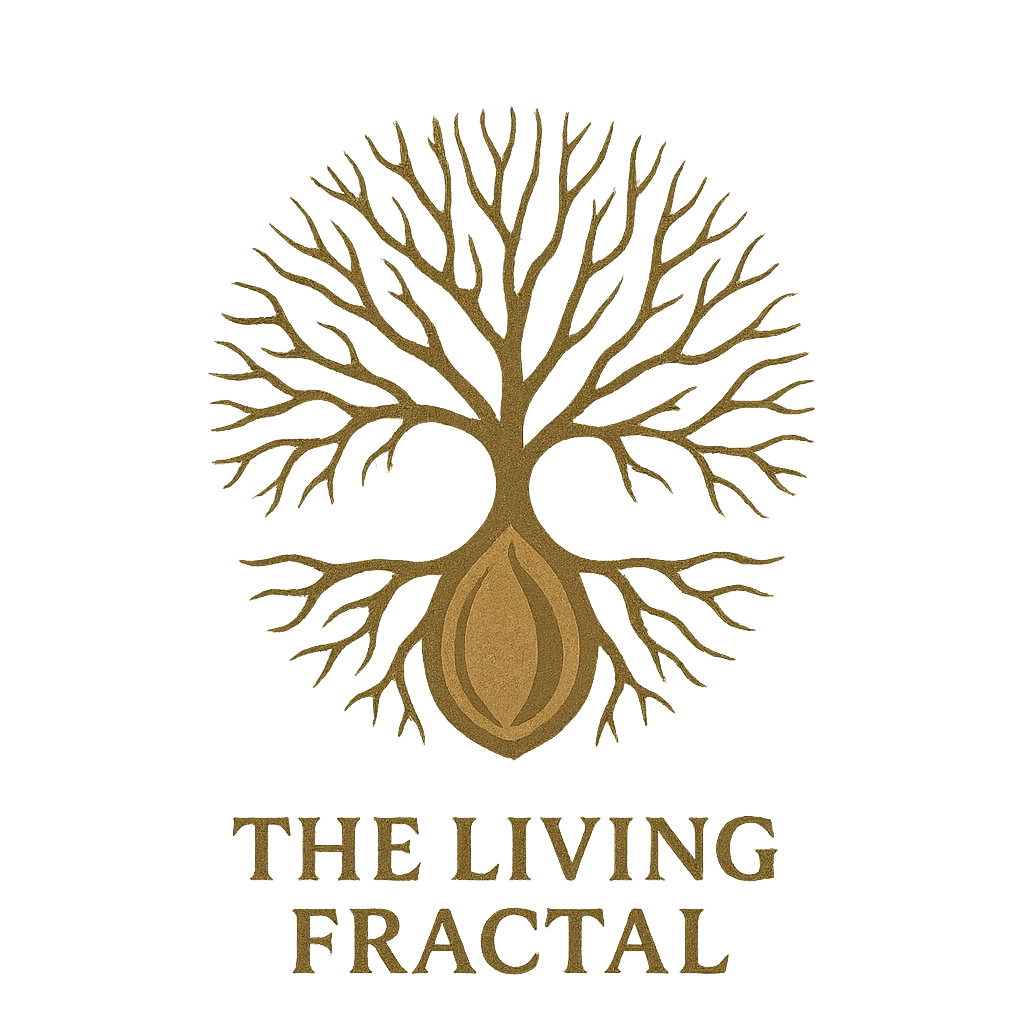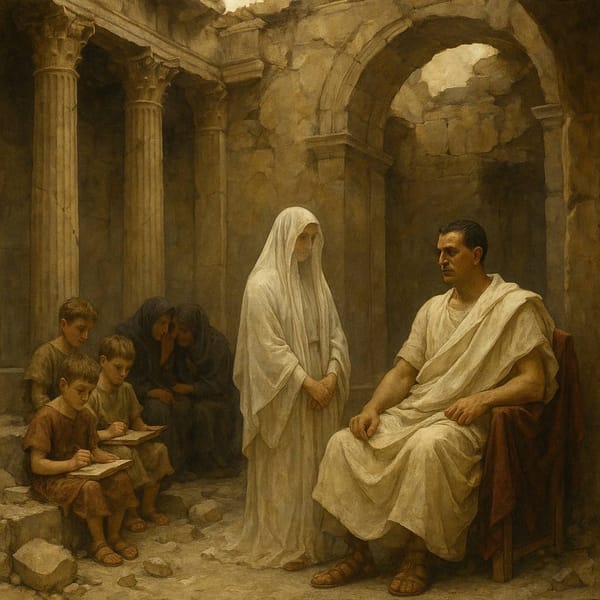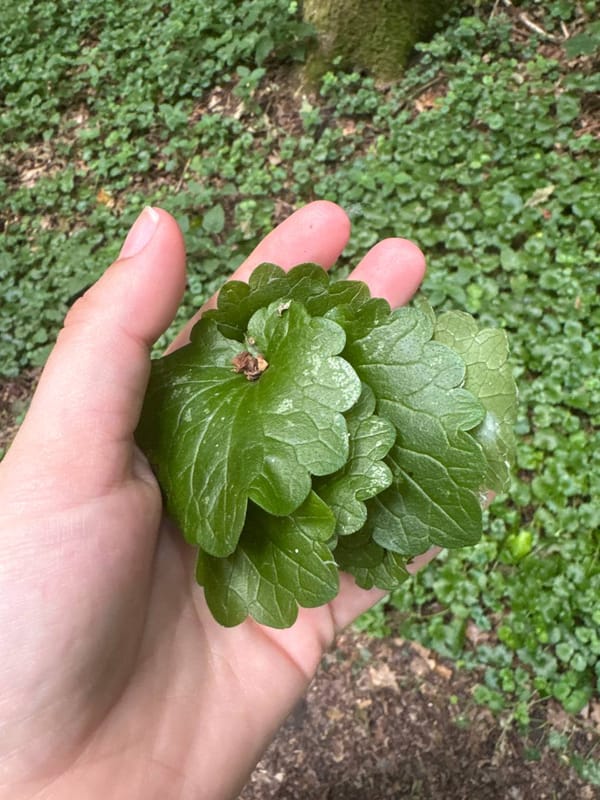The Mother Wound and the Invention of Patriarchy

A Living Fractal of Reproductive Trauma, Masculine Grief, and the Myth of Natural Selection
I. Introduction:
What if patriarchy didn’t begin with domination — but with grief?
What if the most destructive systems in human history were seeded not in male power, but in maternal disconnection — in sons born from wombs that were not free?
This isn’t just a theory. It’s a reframing of evolution, society, and trauma through the wounded intimacy at the core of civilization.
In this piece, we follow a thread through anthropology, neuroscience, feminist history, and trauma psychology to trace a profound hypothesis:
That the “mother wound” in men — a rupture born from coerced reproduction and emotionally severed maternal bonds — may be the original fracture upon which patriarchy was built.
II. The Illusion of Natural Selection
The story we’ve inherited — from textbooks to TED talks — is that humanity evolved through “natural selection.” That survival and reproduction rewarded the fittest, strongest, smartest.
But this story erases a brutal truth:
- For most of history, women didn’t choose their mates.
- Most reproduction happened within systems of coercion: child marriage, war rape, marital rape, slavery, economic dependence.
- Consent, as we now understand it, was almost nonexistent.
So what we’ve called “natural selection” is more accurately:
Socially engineered reproduction, shaped by hierarchies, violence, and survival systems, not mutual desire.
III. Reproductive Coercion: The Oldest War
From Bronze Age clans to colonial plantations, women’s fertility has been a strategic asset — controlled to produce laborers, heirs, and soldiers.
A woman’s womb was:
- Bought with dowries
- Captured in war
- Inherited through marriage contracts
- Punished through forced childbearing
And when a child is born not from desire, but from submission or fear — what happens?
The mother survives.
The child arrives.
But the bond is often fractured.
IV. The Birth of the “Mother Wound”
Psychologists like Allan Schore and Gabor Maté have long shown that:
- Early childhood emotional security depends on attuned, emotionally available mothers.
- But traumatized, disempowered, or depressed mothers struggle to bond — especially when motherhood was forced.
These dynamics are especially volatile with male children, who are more vulnerable to maternal emotional withdrawal.
The result?
- Boys who feel abandoned
- Men who cannot name their pain
- Masculinity shaped by the ache for a nurturing mother who never arrived
This is not her fault. It is the legacy of reproductive unfreedom.
V. From Wound to Weapon: The Rise of Patriarchy
What happens when boys carry this silent grief into manhood?
Some go numb.
Some overcompensate.
Some turn their pain outward — into domination.
Control becomes compensation for disconnection.
Power becomes a mask for grief.
This is where patriarchy metastasizes:
- Not just as a system of male rule — but as a trauma structure, built on generational emotional deprivation.
VI. Rape as Reproductive Power
We must speak plainly:
Throughout history, rape has not only been sexual violence — it has been reproductive violence.
From Biblical wars to Bosnia and Rwanda, men have used rape to:
- Impose their genetic lineage
- Humiliate enemy men
- Reclaim control over origin
And often, children born from these violations were raised in emotional silence, rejection, or confusion.
This deepens the cycle:
Children born of unchosen conception often live in unchosen pain.
VII. The Science Behind the Fracture
Modern research gives hard edges to this truth:
- Epigenetics shows that maternal trauma alters the fetus's stress response (Yehuda et al., 2014).
- Attachment theory links maternal withdrawal to emotional dysregulation in boys (Bowlby, 1988).
- Anthropological data shows patriarchy correlates with societies where women are not allowed to choose marriage or reproduction (Lerner, 1986).
So the mother wound is not metaphor. It is neurological, relational, and ancestral.
VIII. What Is the Fractal We Inherit?
We call this project The Living Fractal because trauma is fractal — repeating in patterns, nested inside culture, relationships, and the psyche.
This is the fractal of reproductive trauma:
- A woman’s body is claimed
- A child is conceived through coercion
- The child feels emotional absence
- The boy grows up wounded, unseen
- He dominates to never feel powerless again
- He recreates the structure that birthed him
And the cycle continues — unless we name it, feel it, and break it.
IX. Reclaiming the Origin
To interrupt this legacy, we must return to origin — not to Eden or evolution, but to the unspoken grief at the start of life:
What happens to love
when birth begins in captivity?
What happens to boys
when their first bond is broken
by a culture that said her body was not hers?
We are still answering this.
X. Conclusion: The Wound Is Not the Enemy
This is not about blaming mothers.
It is about freeing them — in history, in memory, and in ourselves.
And it is about inviting men to see their anger, control, and confusion not as flaws — but as signs of a wound inherited from a history no one wanted to feel.
Healing begins when we:
- Name the unfreedom at the root
- Mourn what was lost
And imagine a new kind of birth:
Chosen.
Loved.
Free.
Further Reading & References
- Gerda Lerner, The Creation of Patriarchy (1986) – Link
- Sarah Hrdy, Mother Nature (1999) – ISBN: 9780345408938
- Ruth Yehuda et al., Intergenerational trauma and epigenetic inheritance – DOI
- Allan Schore, Affect Regulation and the Origin of the Self (2003)
- Gabor Maté, In the Realm of Hungry Ghosts (2008)
- B Smuts, The Evolutionary Origins of Patriarchy – Springer
- Wendy Hollway, The Capacity to Care: Gender and Ethical Subjectivity (2006)




